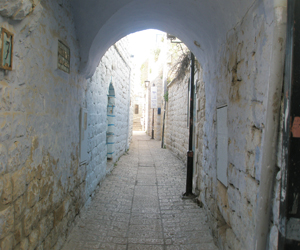Origins Of Jewish Mysticism
There are two different versions relating to the origins of the term: "Kabbalah." Some authorities believe the term originated with Solomon ibn Gabirol (1021-1058), while others subscribe to the theory that it was the 13th century CE Spanish kabbalist, Bahya ben Asher, who coined the moniker. Until the term came into common usage, many other terms were employed to describe this field of Jewish mysticism.
Contemplative Kabbalah
Kabbalistic literature is divided between early works produced in the 1st or 2nd century CE and later works which date back to the 13th century CE. The major kabbalistic work hails from the latter era and is known as the Zohar (lit. Illumination). This work is the basis for the type of Kabbalah known as Kabbalah Iyunit, or Contemplative Kabbalah.
Tradition has it that Kabbalah knowledge was handed down to the Jewish patriarchs, prophets, and sages by word of mouth with the intention that this knowledge become an integral part of the school of divine Jewish thought and literature. Today, most traditional kabbalistic study focuses on the study of the Zohar and the works of the renowned kabbalist, Isaac Luria, known by his Hebrew acronym, the Arizal, as transmitted through the work of the scribe, editor and rabbi, Chaim Vital. The Arizal's work includes commentaries on earlier kabbalistic works.
Buried Works
The codification of the Arizal's work by Chaim Vital involved many revisions, resulting in several versions of the same works. When Vital took ill in Safed in 1587 CE, his brother, Moshe, permitted Chaim's dear friend, the biblical namesake Joshua Ben Nun to borrow some 600 pages of manuscript on short-term loan. Ben Nun was an enterprising fellow who hired 100 scribes to copy the manuscripts, and the goal was accomplished within 3 days time. The text resulting from Ben Nun's venture was filled with errors, but was accorded the honor of being circulated among the leading kabbalists of the time. The original text, along with the rest of his work, was buried with Chaim Vital upon his death.
Dream And Exhumation
After the death of Chaim Vital in 1620, his son Shmuel Vital, dreamed that he was meant to remove certain writings from the grave of his father, while leaving other works buried. The dream and subsequent exhumation of his father's grave occurred in the year 1650. Shmuel Vital recovered the same work that had been transcribed by Ben Nun's scribes and set to work on his own redaction. His version of his father's work was divided into eight sections and is known as the Shmoneh She'arim (lit. Eight Gates). The work was first circulated in manuscript form in the year 1660 CE. Between the years 1863-1898, the book was published in Jerusalem in the form of seven volumes. This version, known as the mehadura kamma, is considered to be the one that is true to Chaim Vital's visionary codification of the Arizal's commentary on the Zohar.

